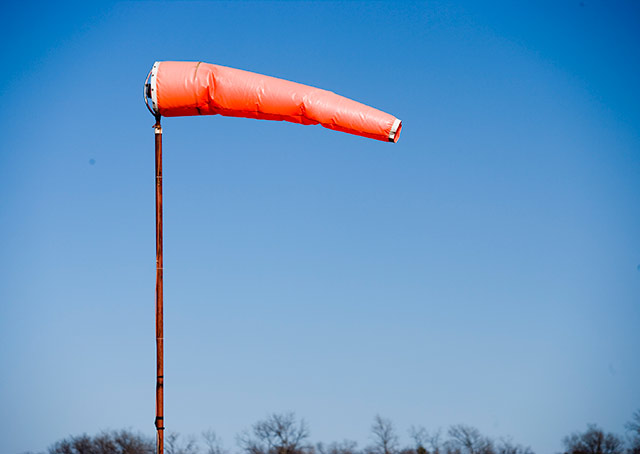
A southwest breeze is blowing as a pilot prepares to depart from a one-runway, non-towered airport. The traffic pattern (left traffic) and the ramp are quiet, so there will be no following other taxiing aircraft to the runway’s takeoff end, and no waiting for a gap in the traffic flow for takeoff.
All of this raises an intriguing question: With the wind blowing precisely 90 degrees to the single runway, which runway end should the pilot choose for takeoff?
The aircraft’s tiedown spot is closer to the Runway 33 threshold than its reciprocal. The pilot’s first impulse is to head for the nearest set of runway numbers.
Upon further consideration, however, the pilot notes that a takeoff in the other direction would place the flight within a few degrees of its on-course heading, quickly making up for time lost taxiing the greater distance to the Runway 15 threshold. Another advantage would be fewer obstructions, and no rising terrain, along the southeast departure path—and the area is less populated, mitigating any noise concerns.
Departing southeast would take the aircraft over a golf course and a four-lane highway, adding safety margin to any low-altitude emergency that might arise. That’s in contrast with the dense woods looming beyond the airport fence at the northwest boundary.
The taxiway’s northwestern end and the first 1,000 feet of Runway 15 once were notorious for loose and cracked pavement; as remarks included in the airport/facilities directory listing for the airport long noted. But those conditions were recently addressed thanks to a paving project funded by the FAA’s Airport Improvement Program. The project also included painting new markings along the runway’s entire length.
As for operational factors to consider for takeoff, a right crosswind would tend to offset the left-turning tendencies of a single-engine airplane, as discussed in the Aug. 31 “Training Tip: Controlling crosswind takeoffs.” That favors a southeast departure in today’s crosswind.
Here’s a no-peek quiz on another operational question: When departing the traffic pattern, in what direction should the first turn be made? When should the turn commence?
Page 7-4 of the Airplane Flying Handbook provides the answer: “If departing the traffic pattern, continue straight out or exit with a 45-degree turn (to the left when in a left-hand traffic pattern; to the right when in a right-hand traffic pattern) beyond the departure end of the runway after reaching pattern altitude.”



